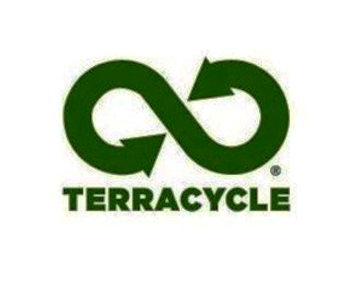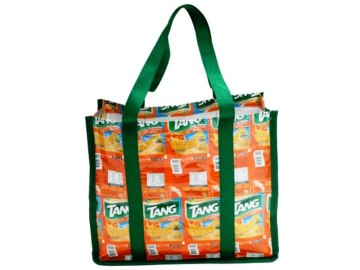
Imagen tomada del Fan Page de Facebook: https://www.facebook.com/TerraCycle.Argentina/photos_stream
Hello dear readers!
It is a pleasure to talk with you this time about one of the most prominent companies in the industry of Upcycling. As we have discussed before here on the blog, it is possible that the shorter definition of «Upcycling» actually comes from Terracycle (1): «Using every aspect of waste as value»
While some sources claim that the first time this concept was used was by Reiner Pilz in a publication of architecture, Terracycle has taken this concept to the next level through education programs, Brigades®, R&D, among other strategies, to create new products, within the framework of Inclusive Business and Social Innovation.
With operations in more tan 20 countries, and other new ones projected (including Colombia), Terracycle has succeeded in bringing together more than 28 million people around the world to collect waste, and it has made contributions of more than USD$ 3 million to charitable organizations. This has allowed Terracycle to get cooperation agreements with various manufacturers of consumer goods, from food industry to cleaning products.
Furthermore, with all the amount of waste collected TerraCycle has been able to develop a whole family of products available for sale, from handbags, to travel accessories, indoor and outdoor furniture and even clothes.

Imagen tomada del Fan Page de Facebook: https://www.facebook.com/TerraCycle.Argentina/photos_stream
It is precisely why, in the context of sustainable design, we invited Tiffany Threadgould, Chief Design Junkie of Terracycle, to tell us about this revolution (by the way, you may want to take a look at the book «Revolution in a Bottle: How TerraCycle Is Redefining Green Business » by Tom Szaky, CEO of TerraCycle)
You may learn more about this company on their website, including what products are available for sale and what and how their Brigades® operate. Also, for anyone interested in participating in Latin America, Terracycle has operations in Argentina, Mexico and Brazil and soon they will open in Colombia and Chile.
Let us see what Tiffany told us:
It is quite a pleasure and a fortune to have this opportunity with you, and we thank you for being with us. On the first place, we would love to know more about what you do in Terracycle, would you tell us something about you?
T.T.: I’m the head of the Design Department at TerraCycle. My team is responsible for all of the upcycled goods that come out of TerraCycle. We are responsible for all of the product prototypes, the interior design of all of our offices, creating specialty furniture and artwork for our brand partners, and just general upcycling goodness that comes from TerraCycle.
We also find very interesting how someone does create value from residues: in other words, what is there so significant in waste?
T.T.: The TerraCycle designers have learned to look at waste materials no longer as waste, but as raw materials for our next projects.
Talking about Design, how could a Designer get into this business? We would like to know how your relationship with Terracycle began.
T.T.: Prior to TerraCycle, I was working with waste materials as a designer. I received my Masters Degree in Industrial Design from Pratt Insittiute. My graduate Thesis was titled Trash Nouveau – the idea of reusing garbage for mass production purposes. I had also written several books on the subject. So when I discovered TerraCycle and realized that they were working with this idea and large companies in a big way, I got hired on the spot. I wasn’t really looking for a full time job, but the mentality of recycling and upcycling was so similar that I jumped at the opportunity. The other designers that work at TerraCycle also have a similar style of working with garbage.
Now that you are working in one of the most important companies in this industry, what is the most exciting and interesting thing about working in Design with valuable things considered waste by other people?
T.T.: We work with a lot of food packaging and flexible food wrapper material. We are always challenged and bring a lot of refreshing ideas when we have interesting materials and shapes to work with. We recently had shampoo bottles, old tents, and wine corks be materials that we are challenged to solve. We also have a separate technology team that focuses on recycling (breaking the material back down rather than reusing the material as-is). They recently discovered how to recycle cigarette butts. It’s a disgusting material, but we never say “no” to any kind of garbage. Dirty diapers are another one.
By the way, is there any “residue” you like the most? If you do, why? In the same way, do you have in mind a product, created by you with “residues”, you love the most? Could we know why?
T.T.: The residue or garbage that we use mostly is the flexible wrapper material. That has multiple plastics in it, so it’s not typically recycled in regular recycling programs. TerraCycle creates national recycling programs for any waste material that doesn’t have a solution. The projects that we’ve created that I really love are the projects in the office. They’re made from unique materials – for example we created a conference table out of an old bowling alley. And our carpet is Astroturf from a nearby soccer field.
Would you consider Design as a key factor in the competitiveness of Terracycle? In this case, how has Design helped Terracycle (and yourself) in making a difference in the Upcycling business, comparing to similar companies?
T.T.: Yes, design does make TerraCycle more competitive. TerraCycle has the unique benefit that we work with companies that sponser the collection programs. There is not really another company working in the same space as TerraCycle.
We have seen an increasing number of companies using residues for designing products, even here in Colombia (though there are not too many as successful as Terracycle) Nevertheless, how are you preparing for the increasing competition in this market?
T.T.: TerraCycle is trying to be first to market in many countries. We are in 20+ countries to date. We hope to be in Colombia soon 🙂
Do you currently hold some environmental certification, such as an Ecolabel, or the ISO 14001, or any similar? If you do, we would like to know which one(s) do you have, and if you would you recommend to get certificated in one in particular. If you do not, are you considering getting one?
T.T.: TerraCycle does have various certifications in many different countries. But in many cases the TerraCycle logo comes on packaging and is a certification in itself. It shows consumers that even if they can’t recycle their packaging in their regular recycling bin, there is a solution and they can send it in to TerraCycle.
(1) http://www.terracycle.com/en-US/pages/upcycling.html (May 7th, 2013)

